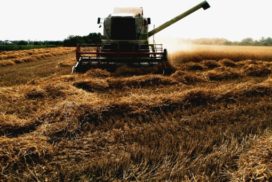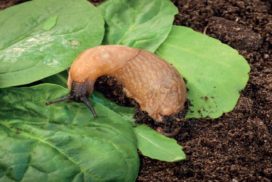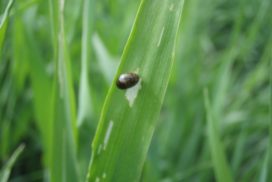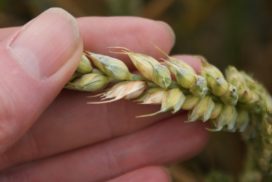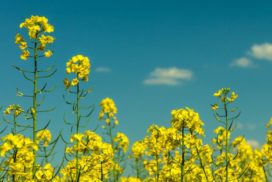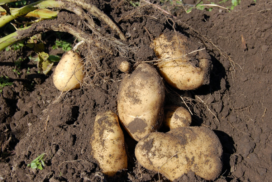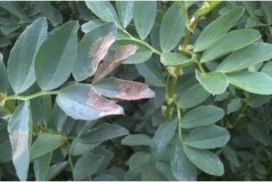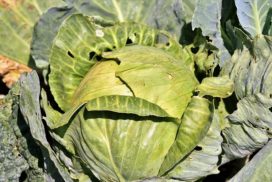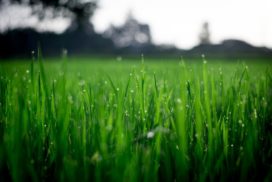Crop Health Updates - October 2020
General Comments
The common consensus seems to be that this years’ harvest was a lot less stressful that the 2019 harvest! The predominantly dry September has meant that most of the harvest was relatively straightforward, with no crops likely to be left in the ground unable to be harvested. Let’s hope the same goes for the potato harvest. There do seem to be regional variability with yields with some growers pretty happy and others not so.
Sowing is well underway for the 2021 crops and many report good even emergence. Oilseed rape has been targeted by flea beetles when dry and then slugs when wet. Many are close to escaping the risk of damage, but other crops may well bear the brunt of slugs as the weather turns wetter. Slugs will also be eyeing up wheat crops.
Now is a good time to think about soil sampling for pH, nutrients and pest and disease issues for next springs’ crops.
Harvested Crops - October 2020
Ensure grain moisture is kept below 14% and pests in store won't be an issue.
All Winter Crops - October 2020
Slug damage is common in winter oilseed rape crops and wheat will be next on the menu. In oilseed rape, the crops need to be protected from slug damage up until the 4-leaf stage. Read more here
All Cereals - October 2020
The numbers of aphids flying into crops will be dropping with the change to cooler weather. There is still a risk of cereal aphids picking up barley yellow dwarf virus (BYDV) from infected plants and spreading the virus to cereals being sown this autumn.
To read more, click here
Winter Wheat - October 2020
Wheat bulb fly egg laying will be dropping off now. Growers should identify potential fields at risk and consider an assessment of egg numbers in fields planned for wheat. The only option now for wheat bulb fly control is the seed treatment cypermethrin. Fluxdioxonil and Tefluthrin mixture had a use up date of 31st August 2020.
Read more here
Winter Oilseed Rape - October 2020
Diseases
Early fungicide sprays for phoma are not cost-effective in Scotland except in areas where the disease is prevalent, and although the disease is sometimes recorded in Scottish crops, especially around the Borders it is usually at trace levels and not economically damaging to the crop.
Read more here
Potatoes Update - October 2020
Potato groundkeepers and crop health in 2021
Volunteer potatoes are a significant threat to crop health principally because they can act as a reservoir of disease inoculum (e.g. blight, Rhizoctonia, black dot, powdery scab, aphid-transmitted and spraing viruses) and pests (e.g. potato cyst nematode, aphids, free living nematodes/spraing). Also, the presence of volunteer potatoes above a threshold population in seed potato crops can result in the crop being downgraded at inspection.
Read more here
Winter Beans Update - October 2020
Pre-emergence weed control
Weed pressure in winter beans tends to be low due to the later sowing date when fewer weeds germinate. However, beans are sown at a very low seed rate so there is plenty of room for any weeds that do germinate to develop into a problem. Volunteer cereals can need controlling, and on farms that have brome or black-grass, winter beans give an excellent opportunity to try to prevent seed return of these problem weeds for one year at least.
Read more here
Vegetable and Forage Brassicas Update - October 2020
Pests
We are still finding cabbage root flies in our monitored fields of swedes. However, with the weather now turning cooler, the threat from slugs outweighs that of cabbage root fly, so covers should be removed to allow slug pellets to be applied.
Read more here
Grassland Update - October 2020
Weeds in autumn re-seeds
The best start for an autumn re-seed is to have sprayed off the old sward with glyphosate to establish a sward free of perennial weeds. If the old sward had perennial weeds and was not sprayed off, then there could be dock, thistles and nettles re-growing from root and rhizome fragments. These are difficult to control in a young sward.
Read more here
Sign up to the FAS newsletter
Receive updates on news, events and publications from Scotland’s Farm Advisory Service

